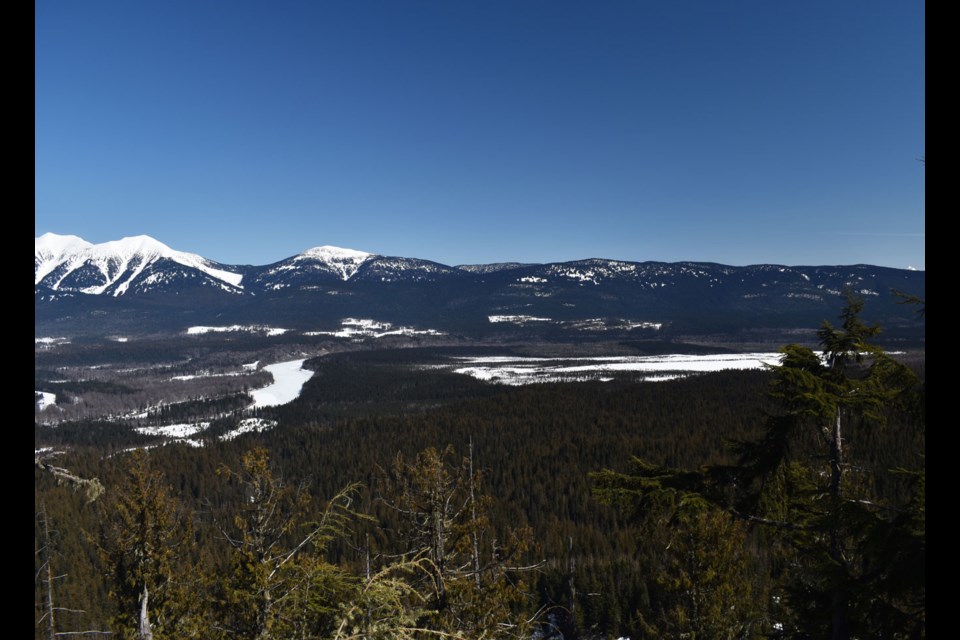Call it a case of old growth trumping gravel.
The provincial government has bestowed protected area status on a stand of old growth forest just west of Ancient Forest-Chun T’oh Whudujut Provincial Park.
The 83-hectare site was previously part of a reserve for the Ministry of Transportation's Driscoll Creek gravel quarry but with the designation, quietly approved in July via an order in council, it should remain untouched by industrial activity in perpetuity.
The step was taken largely in answer to the work of Darwyn Coxson, a biology professor at the University of Northern B.C., and Nowell Senior, a noted member of the Prince George hiking community who was instrumental in the creation of the neighbouring provincial park.
Over the years since the park was established in 2016 in the name of showcasing a portion of B.C.'s inland temperate rainforest, the pair had their eyes on gaining some sort of protection for the grove.
The effort entailed a series of late-winter snowshoes into the area to measure the girth of the Western red cedar followed by a trek last summer to verify the trees' diameters where they flare at their bases.
"And that was challenging. It was a difficult site to walk into, there are very rich soils on those wet benches and the devil's club is very luxurious in these ancient cedar stands," Coxson said.
They produced a map showing nearly 60 candidates for the provincial government's Big Tree Registry and applications to add about a half dozen, each measuring at least three metres in diameter, were submitted.
More important, their work helped convince the provincial government to give the area protected area status. Although the designation is not as strong as if it were made a Class A provincial park, "there wouldn't be major industrial activity," Coxson said.
The process is also more straightforward. Establishing or expanding a provincial park requires a full-blown legislative amendment and approval from a majority of MLAs.
Coxson is happy with the outcome.
"It looks like they pretty much followed our recommendation here," Coxson said.
Indeed, the province took the 67 hectares Coxson and Senior surveyed and added a 16-hectare dogleg so the site abuts Highway 16 and provides a corridor for wildlife down into the valley.
Prior to creation of the park, the site had also been home to the trailhead for the west end of the Driscoll crossover trail. It is now about three kilometres further west where it will likely remain.
Coxson is not finished yet. He is also seeking protected area status for a 986-hectare corridor connecting Ancient Forest-Chun T’oh Whudujut and Sugarbowl-Grizzly Den provincial parks.
"It's a critical corridor both for caribou activity and old forest values," Coxson said.
As a result of a complaint to the Forest Practices Board many years ago, the corridor has been designated as a “candidate” old-growth management area and a pause has been put on any logging planned for the zone.
But Coxson fears the pause is only temporary.
"I would be much more comfortable with that corridor having more formal protections," he said.
His best bet for seeing that occur appears to be the federal government's plan to have 30 per cent of the country protected by 2030.
"That could be one consideration for it. I'm looking more at ecosystem integrity in the Upper Fraser. We know where significant patches of old growth forest are and where caribou use and occupation areas are; we need to utilize some of our existing information and make decisions in that respect," Coxson said.
If preserved and protected, Coxson sees a bright future for the old growth that exists in and around Ancient Forest-Chun T’oh Whudujut, even in the face of climate change.
"I'm really pleased with the designation of the Ancient Forest protected area and park because the relatively wet north face of Driscoll Ridge is probably a site where these ancient cedar stands will be able to weather climate change and will be more resilient into the future," Coxson said.




